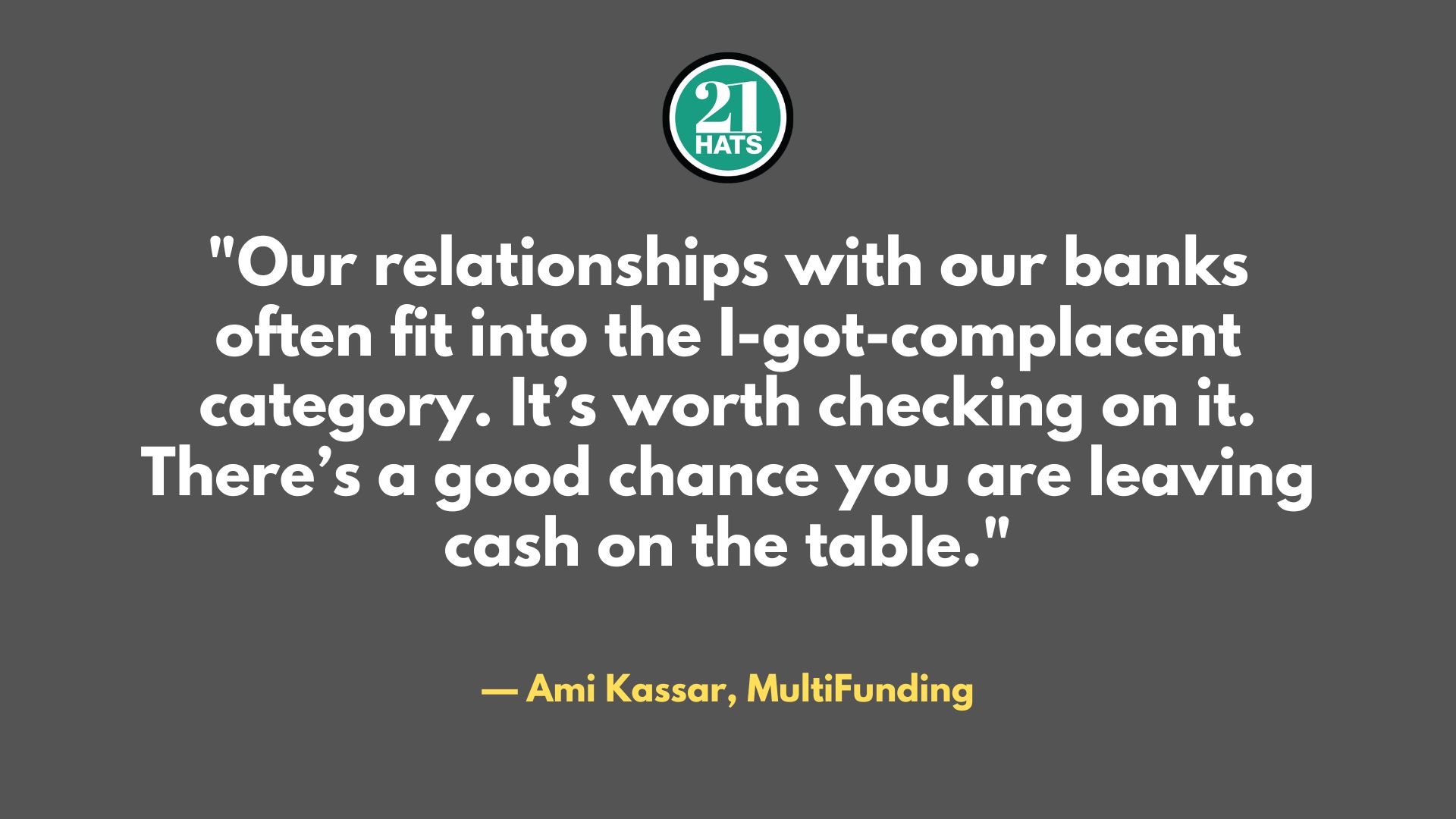Don’t Let Your Bank Take Advantage of You

I was surprised to learn how many business owners leave money on the table when dealing with their bank.
By Ami Kassar
A few weeks ago, I shared that my company was on the verge of diversifying our product offerings and partnering with a bank to offer business banking accounts and lines of credit in nine states. We have successfully launched these new services and are obtaining promising early results. Like any new venture, you learn a lot when you dig in and start trying to sell and interact with customers. I thought it would be interesting to share our lessons so far. The biggest: Many small business owners and entrepreneurs leave a lot of money on the table in their banking relationships.
To understand why, you really have to know how banks make money. There are three primary revenue sources for banks. Banks make money lending money. Their goal is to lend you money at interest rates higher than their cost of capital. If they lend money in the form of a term loan, they have put their capital to work. And if all goes well with the loan, they can expect to make a profit. If the loan is a line of credit where they only make money when you use it, their calculation is a little trickier. That’s because the bank has to hold the capital for you, essentially, instead of deploying it elsewhere.
Banks also make money by taking deposits. They want your deposits so they can turn around and lend them out. But they want to pay you the least interest possible on those deposits in order to maximize their return. This is a big opportunity in a high interest rate environment as we are in today. Banks also make money charging almost any kind of fee that they can imagine and get away with.
So, what does this all mean to you? Evaluating your banking relationship is worthwhile and can lead to found money. Start by recognizing that your deposits are your most valuable asset to a bank. I have been shocked over the last few weeks to learn how many business owners have hundreds of thousands of dollars sitting in a bank account that is paying them .25 percent interest on their money. Competitive rates for balances like this should be over 4 percent in today’s environment.
Sometimes, banks will also offer ‘no fee’ checking accounts in exchange for no interest on your account. This is a trick that you shouldn’t fall for. Fees and interest income should be reviewed all together. Also, recognize that if your bank cannot give you a line of credit for about 10 percent of your top-line sales, you may need to find another bank.
Another lesson from the last few weeks is the reminder that we are busy people, running 100 miles an hour, and sometimes, we don’t take time to check in on the ecosystem that we have built around us. We all have many relationships, software subscriptions, etc., that we have used for a while, and we just assume they are still servicing us well even though we may have outgrown them.
Our relationships with our banks often fit into the I-got-complacent category. It’s worth checking on it. First, as I said, there’s a good chance you are leaving cash on the table. Second, especially in this economic environment, a healthy line of credit should be thought of as an essential insurance policy.
Think about checking in at your bank much the way you go to the dentist. It’s worth getting a check-up.
Ami Kassar is CEO of MultFunding.